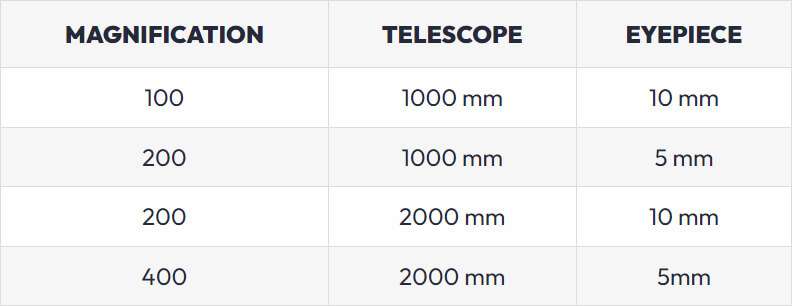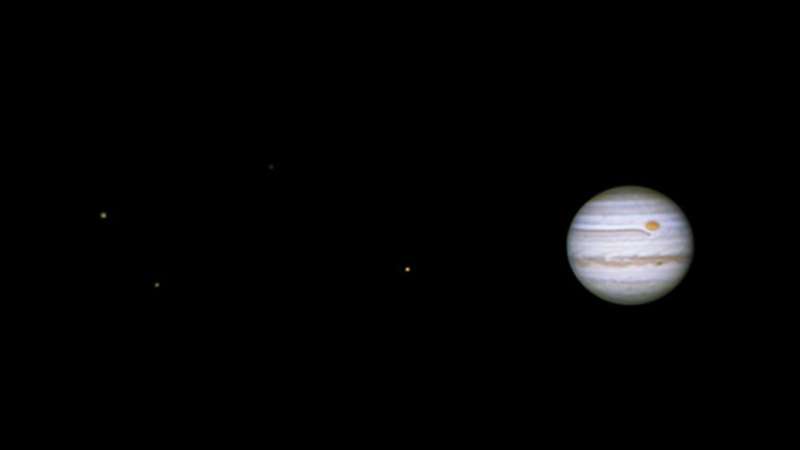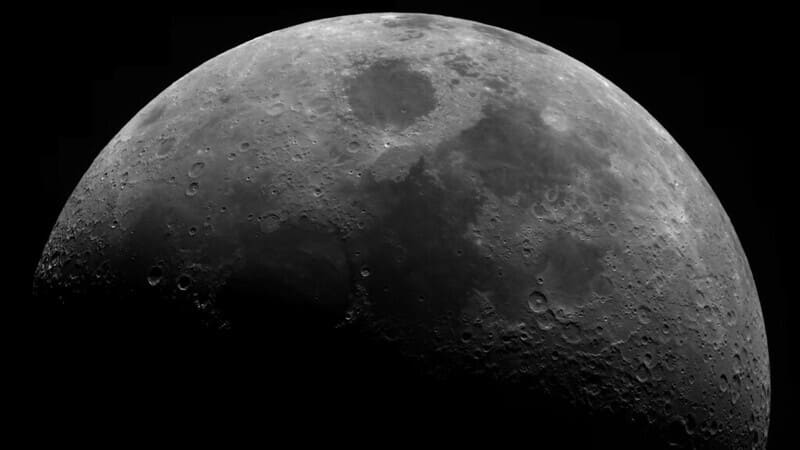Are you a young astronomy enthusiast looking to explore the night sky? Finding the right telescope magnification is the key to unlocking the universe’s wonders. But what is a good magnification for a telescope?
A good magnification for a telescope provides you with clear and detailed images of celestial objects. It will allow you to observe the planets, stars, and other heavenly bodies at your desired level. You’ll enjoy countless stargazing adventures and make amazing discoveries by getting the magnification right.
In a nutshell
- Star Clusters: 20x to 40x
- The Moon: 50x to 100x
- Deep-Sky Objects: 80x to 120x
- Planets: 120x to 200x
- Galaxies: 150x to 200x
In this article, you get
Detailed definitions of key terms about telescope magnification
Helpful examples for determining the best magnification power
The magnification formula for your astronomical telescope
By the end of this article, you’ll understand various magnification levels for observing celestial objects beyond your naked eye.
Let’s dive right in.
Recommended For You
Understanding What Is a Good Magnification for a Telescope

Telescope Magnification
Telescope magnification is essential in astronomy, as it helps you see faraway objects more clearly.
To calculate the magnification, divide the telescope’s focal length by the eyepiece’s length.
For example, a telescope with a 1000mm focal length and a 20mm eyepiece would magnify 50x (1000 ÷ 20 = 50).
It’s helpful to know when to use a different magnification. Let’s explore various magnification options.
Useful Magnification
Knowing the useful magnification can make a difference in your stargazing experience. The sweet spot is around 30x to 50x per inch of aperture for planet viewing and 20x to 30x per inch of aperture for deep-sky objects.
For a 4-inch telescope, that means:
- For planets: 120x to 200x (4 x 30 = 120, 4 x 50 = 200)
- For deep-sky objects: 80x to 120x (4 x 20 = 80, 4 x 30 = 120)
Going too far above this sweet spot gets you into maximum useful magnification.
Highest Magnification
A higher magnification leads to better views, but a high magnification limit exists. The maximum usable magnification for a scope is around 50x per inch of aperture.
The maximum magnification for the 4-inch telescope mentioned earlier would be 200x (4 x 50 = 200). Above this limit, the images might become blurry and less enjoyable.
Low Magnification
On the other hand, low magnification has its benefits too. Lower magnification offers a wider field of view, making finding and observing bigger objects like star clusters or nebulae easier.
Here are some advantages of using the minimum magnification:
- Wider field of view
- Brighter images
- Easier to locate objects
Now that you’ve better-understood telescope magnification, you’ll be more prepared for the next exciting part of your astronomy journey – exploring various factors that affect magnification and the resulting image!
Factors Affecting Magnification
When it comes to telescopes, several factors affect magnification. This section will explore four crucial elements:
- Telescope Aperture
- Focal Length
- Eyepieces
- Barlow Lenses
Telescope Aperture
The aperture of a telescope is the size of its primary mirror or lens. The larger the aperture, the more light it can gather, and the better you can see celestial objects.
Here’s a simple rule to remember: a bigger aperture usually means better views.
Focal Length
The focal length of a telescope directly affects the magnification. A longer focal length means higher magnification. The focal length is in the numerator of the magnification calculation, so it makes perfect sense that a longer focal length results in higher magnification.
Eyepieces
Eyepieces play a vital role in determining magnification. Different eyepieces offer different focal lengths, so using a shorter focal length eyepiece will give you higher magnification. Since the eyepiece focal length is in the denominator of the magnification calculation, a smaller number would make the resulting magnification larger.
For example, a 10mm eyepiece offers higher magnification than a 20mm eyepiece.
Remember that selecting eyepieces with different focal lengths is essential to suit different observing situations.
Barlow Lenses
Barlow lenses are accessories that help increase the magnification of your telescope.
They come in different forms:
- 2x Barlow lens (doubles the magnification)
- 3x Barlow lens (triples the magnification)
A Barlow lens can be handy for getting a closer view of planets and other small objects in the night sky.
Now that you’ve learned about these important factors affecting magnification, you can confidently explore the night sky. In the next section, let’s discuss choosing the perfect magnification for your needs.
Recommended Magnification for Observing Objects
In this section, I’ll guide you through the magnifications needed to observe celestial objects like planets, the Moon, star clusters, galaxies, and nebulae.
Remember, the best magnification depends on your telescope’s setup and the celestial object you’re looking at.
Planets

A magnification of 60x to 100x is usually enough to observe the planets in our solar system.
For example:
- For Jupiter, try 80x to 100x to see its cloud bands and its largest moons
- For Saturn, 80x is enough to see its rings, but you can go up to 100x for a clearer view
Moon

The Moon is one of the easiest and most fascinating objects to observe. A magnification of 50x to 100x works well to reveal its craters and other surface features.
Star Clusters

Star clusters can be observed at lower magnifications, usually between 20x and 50x. The lower magnification lets you see more stars in a larger field of view.
For example:
- To view the Pleiades star cluster, 20x to 30x is sufficient
- For the Beehive cluster, 30x to 40x is ideal
Galaxies and Nebulae

These deep-sky objects require higher magnifications, typically around 100x to 300x, depending on the size and brightness of the celestial object. However, the higher you go, the steadier your telescope mount should be.
Here are some examples:
- To observe nebulae like the Orion Nebula, try 100x to 150x magnification
- For galaxies, such as the Andromeda Galaxy, a magnification of 150x to 200x can give you a better view
Now that you know the optimal magnifications for observing different objects, the next section will guide you through various other factors affecting your viewing experience.
Influence of Viewing Conditions and Atmosphere
The atmosphere plays a significant role in the quality of the image seen through your telescope. Here, we will discuss critical factors influencing your viewing, such as:
- atmospheric turbulence
- light pollution
- air temperature
- transparency
Atmospheric Turbulence
Atmospheric turbulence is the instability in the air that distorts light from celestial objects. It can make stars seem to twinkle, and objects appear blurry.
To minimize the effects of turbulence, try the following:
- Observe when the sky is calm, without any strong winds.
- Wait for your observing targets to rise high in the sky, as turbulence affects them less.
Light Pollution
Light pollution comes from artificial lights, like street lamps and buildings, which wash out the faint objects in the sky.
To avoid light pollution, you can:
- Observe from a location far from city lights.
- Use a telescope with a larger aperture.
Air Temperature
Air temperature affects how efficiently your telescope works. When the temperature changes rapidly, your telescope might fog up or not focus properly.
Keep these tips in mind:
- Allow your telescope to adjust to the outside temperature before observing.
- Avoid observing next to hot surfaces, like concrete or asphalt.
Transparency
Transparency refers to how clear the air is. When the air is full of haze, smoke, or clouds, it reduces transparency and makes it harder to see celestial objects.
To increase transparency:
- Observe after rain or during cool hours, when the air is clearer.
- Check weather forecasts to find days with good transparency.
Now that you know the influence of the atmosphere on your telescope’s performance, it’s time to explore the specific advantages of different telescope types and configurations for observing various celestial objects.
Choosing the Right Telescope and Eyepieces
Refractor Telescope vs. Reflector Telescope
When choosing a telescope, there are two main types: refractors and reflectors.
A refracting telescope uses its objective lens to gather and focus light, while a reflecting telescope use mirrors. One key advantage of refractor telescopes is that they generally offer sharper images.
In contrast, reflector telescopes give you more aperture at a relatively low cost, allowing you to see fainter objects and finer details.
Focal Ratio and Performance

Another crucial factor to consider is the telescope’s focal ratio.
The focal ratio is the ratio between the focal length and the aperture. A telescope’s performance often depends on its focal ratio, which determines the image quality and field of view.
Generally, a lower focal ratio provides a wider field of view. It is better for observing larger objects, while a higher focal ratio offers better magnification and is suitable for observing smaller or more distant objects.
Mount Stability
A telescope’s mount is essential for keeping your telescope steady and tracking celestial objects. A stable mount is crucial for high magnifications and extended observing sessions.
There are two main types of mounts: altazimuth and equatorial.
Altazimuth mounts move in horizontal and vertical axes, while equatorial mounts are designed to follow stars more accurately through the sky.
By selecting the right telescope, understanding focal ratios, and ensuring a stable mount, you’ll be well-equipped to discover the wonders of the night sky.
The following section will explore more tips and tricks to help you get the most out of your stargazing experience.
Considerations for Amateur Astronomers
Beginning Stargazers
As a young stargazer, you might be curious about what makes a good magnification for a telescope. A good rule of thumb for figuring out a telescope’s top useful magnification is 50 times its aperture in inches or twice its aperture in millimeters.
For example:
- A 2-inch telescope should not exceed 100x magnification
- A 4-inch telescope should not exceed 200x magnification
Remember, the sky’s the limit – but not too much at first!
Eyesight and Image Quality
Your eyesight is critical in how much detail you can observe when using a telescope. Besides the magnification, the image quality depends on your desired level of detail for observing celestial objects.
Higher magnification can provide more details but may affect the image’s brightness and clarity.
When stargazing, consider the following:
- Start with lower magnification for a brighter and broader view
- As you get more comfortable, increase the magnification to see more details
- If image quality degrades with higher magnification, consider reducing it for a clearer image
Maintenance and Collimation
Telescopes, like everything else, require maintenance to perform optimally. One crucial aspect of telescope maintenance is collimation. Collimation is aligning your telescope’s optics to ensure a sharp and well-centered image.
As an amateur astronomer, you should:
- Learn about your telescope’s collimation procedure
- Check collimation regularly and adjust as needed
- Store your telescope in a controlled environment to protect the optics
Now that you’re prepared with these essential considerations for amateur astronomers, you’re one step closer to exploring the universe’s wonders.
Summary: Good Telescope Magnification
Thank you for reading my article “What is a Good Magnification for a Telescope?”
When choosing a telescope, it’s essential to think about the magnification. Magnification is the size of the objects in the eyepiece compared to their size when you look at them with your eyes.
For example, when observing Mars at 50x magnification, the red planet will appear 50 times larger than if you looked at it with your eyes.
To calculate telescope magnification, you can use this formula:
Magnification = Telescope focal length / Eyepiece focal length.
Let’s say we have a 1200 mm telescope focal length and a 25 mm eyepiece focal length. Using the formula, we get 48x magnification (1200 mm / 25 mm).
So, what makes a good magnification for a telescope? The best magnification is the one that provides you with the image density and clarity that you desire. In other words, the ideal magnification lets you see the objects you are interested in and the level of detail you want.
For instance, if you’d like to see the craters on the Moon up close, 50x magnification is excellent. However, if you wish to observe distant galaxies, you may need a higher magnification, like 100x.
To have an incredible stargazing experience, follow these valuable tips:
- Ensure your telescope is stable to prevent shaky images
- Make sure you’re in an area with minimal light pollution
- Give your eyes time to adjust to the dark
- Have a space map or app to help locate celestial objects
And that’s it! Keep in mind that practice makes perfect. The more you use your telescope, the better you’ll become at finding and observing the wonders of the night sky.
Enjoy exploring the universe and discovering its many secrets!




